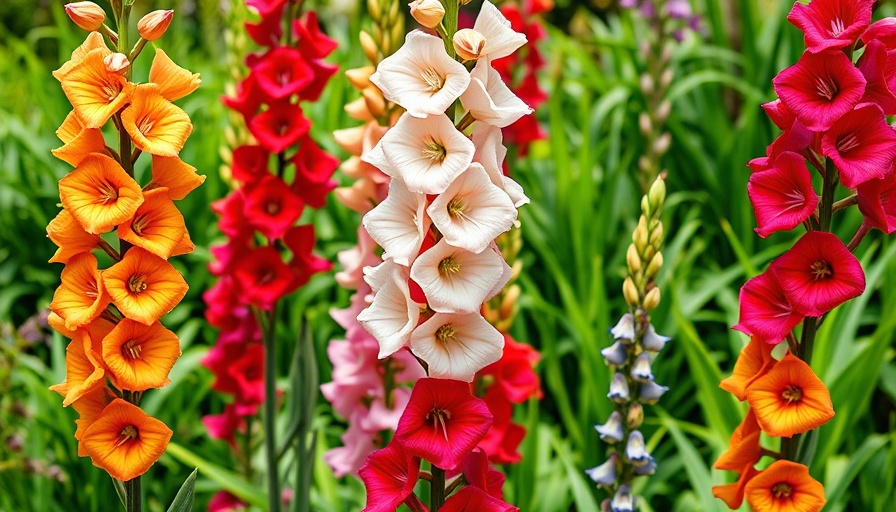
Unveiling the Vibrant World of Gladiolus
For many gardeners, gladiolus flowers are quintessential summer beauties that add a splash of color and drama to any outdoor space. These tall, elegant flowers, often referred to as sword lilies, have captivated gardeners since their introduction in 1841. With approximately 300 species available, the wide array of gladiolus colors and varieties offers something for every gardener’s aesthetic. Gladiolus typically bloom throughout the summer, especially if planted correctly in the spring.
Why Plant Gladiolus?
Besides their stunning appearance, gladiolus flowers serve multifaceted roles in the garden. These blooms can be utilized effectively as cut flowers, enhancing your indoor floral arrangements with their tall, striking spikes. They typically bloom from late May until September, making them perfect for summer gardens. Additionally, some varieties can be planted in the fall and left in the ground through winter, appealing to those who prefer less laborious gardening practices.
Understanding Gladiolus Hardiness
A crucial factor for any gardener is understanding the hardiness of the plants they intend to cultivate. Standard gladiolus prefer warmer climates (Zones 7-10) while some species, like Gladiolus nanus, are more tolerant of colder conditions, suitable for Zones 5-7. Selecting plants that are appropriate for your specific region is vital, and reading the descriptions on bulb packages can help ensure successful growth.
Planting Gladiolus: A Step-by-Step Guide
When it comes to planting gladiolus, timing and technique are key. Start by choosing a sunny location with well-draining soil. For the best outcome, prepare the soil by incorporating organic compost for enhanced nutrients. Plant the bulbs at least 6 inches deep and 4-6 inches apart, ensuring they have ample room to thrive.
Water after planting, but avoid overwatering, as gladiolus are prone to rot if left standing in water.
Yearly Care and Maintenance: Keeping Your Gladiolus Thriving
Once your gladiolus begin to sprout, maintaining their health is essential. Here are some key care tips:
- Mulching: Applying a layer of mulch can assist with moisture retention in the soil and suppress weeds, allowing gladiolus to bloom without competition.
- Staking: As these flowers grow tall, providing support through staking can prevent them from falling over, especially during rainy spells.
- Watering: Regular watering is critical, particularly during dry spells, as gladiolus thrive in slightly moist soil.
- Pest control: Keep an eye out for common pests that may feasts on your plants. Ensuring your gladiolus is healthy will ward off most issues, but be vigilant and treat any infestations promptly.
Enhancing Your Garden with Gladiolus
Incorporating gladiolus into your garden design can create a spectacular focal point. Consider mixing various colors and heights to provide dynamic visual interest. Also, planting them near other summer bloomers can create a harmonious color palette and attract pollinators.
Conclusion: Discover the Joy of Gardening with Gladiolus
Whether you are a seasoned gardener or a novice looking for friendly planting options, gladiolus offers an enjoyable, fulfilling experience. Their splendid blooms not only beautify your garden but can also provide cut flowers for your home! So, this planting season, consider adding gladiolus to your garden for a dazzling display that will brighten your outdoor space.
 Add Row
Add Row  Add
Add 




Write A Comment